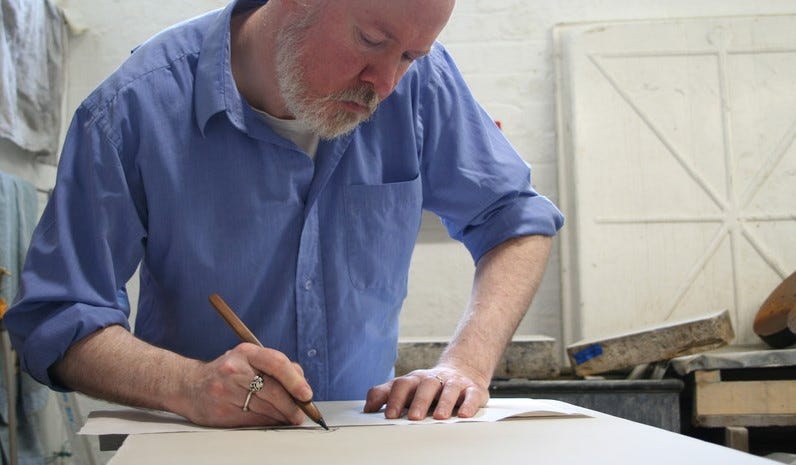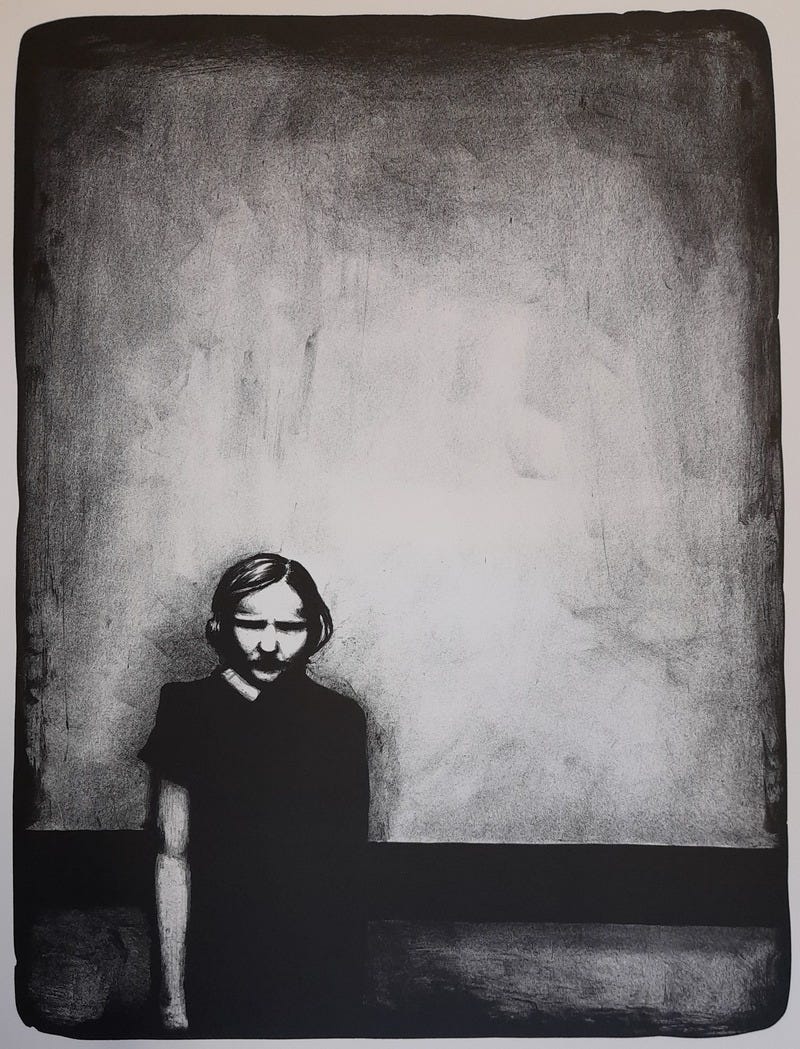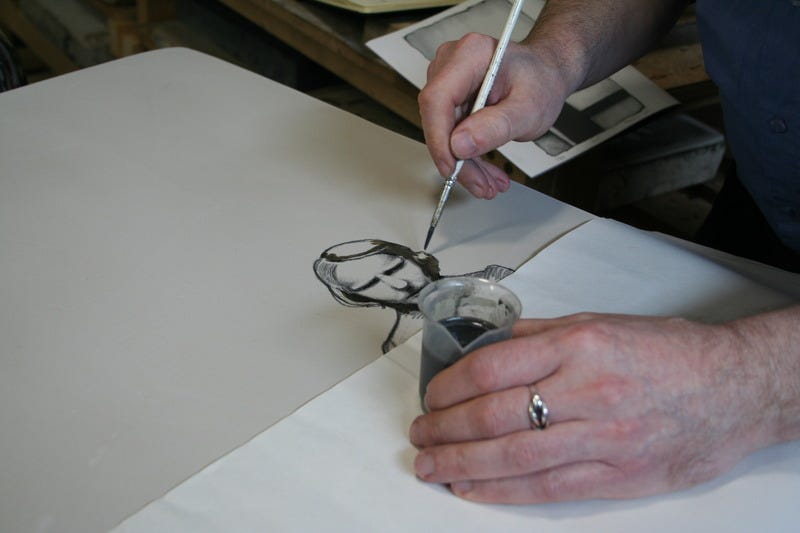Girl lithograph
A return to a lithographic studio after a 30-year absence reminded me of the difficulties and rewards of making artist's original prints.
Although most of you will know me as a writer, my primary activity is actually as an artist. I trained as an artist at Goldsmiths College, London in the 1990s. Much of my time at college was spent in the print room. That is why it was a great pleasure to return to printmaking in May to make my first lithograph since my college days.
Girl was hand-drawn on stone and printed on paper by a master technician in a specialist studio. I selected the image of a girl because it was one of my most popular and recognised compositions. I painted a number of versions in the 2000s in oil paint and exhibited them in Berlin, Bulgaria and Wales. The stone surface I selected ahead of my arrival at the studio was 65 x 48 cm. Viewing the stone in person, I decided to work right up to the edges rather than use a sharp margin at a reduced size. My paper would be Somerset 300gsm white, trimmed to 77 x 56 cm.
During preparation I drew the design in reverse. When the design is printed, it is reversed, so if one wants to get the same effect, that has to be countered by reversing the design on the stone or plate. Lithography works on the principle of oil and water repelling each other. A fine-grain limestone block is ground smooth. (This is more often done using a metal plate.) It is then drawn on in wax or painted on in an inky solution (called tusche). An alternative is for the artist to draw on a sheet of plastic or special paper and this design to be transferred on to the stone. This design will hold the ink. The oily design is then chemically fixed (or bitten) into the surface, the stone moistened and then oil-based ink is rolled over the surface. It stays in the design and is repelled by the damp unmarked areas. A sheet of paper is laid over the stone, a rigid platen (plate) put on top and then the bed of the press, with the stone, paper and plate on top, is passed under a blade or roller. This pressure transfers the ink from stone to paper.
Lithography was the prime method of printing during the Nineteenth Century. Developed in 1796, lithography was a means of reproducing drawings, lettering and graphics. By combining different impressions on the same sheet, multiple colours could be added. This is quite a tricky process and requires specialist skills, in addition to equipment that is no longer manufactured and is sometimes as much as a century old. There are relatively few traditional studios left. Most artists are unwilling to learn the skills necessary and prefer glicée printing of a photograph, which is not an artist’s original print – regardless of the number and signature – but a print-out, poster or reproduction. Naturally, lithography is not cheap but what you get will last longer than a glicée and is an artist’s original print – a genuine work of art – which will hold its value better. Not least, the lithographic design on the stone is destroyed after printing and can never be reproduced, whereas with a digital file, someone just needs to hit the “print” function to get a flawless multiple.
Over three hours I drew my design on the stone, careful not to make any mistakes, which are slow and difficult to correct. Two days later I came back to check the trial proofs (prints). With the printer I discussed the inking and pressure to be used. She made small adjustments as I watched. We started off with light pressure and inking and cheap paper, called newsprint. Gradually, we moved to more pressure and ink and tested on good paper. Once I was happy with the results, I signed a sheet “BAT”, which means “bon a tirer” – French for “good to pull” (print). This is effectively a guide for the printer, so that he or she has a standard to allow him/her to print uniform copies. It is also a contract. An artist cannot complain at the end that this was not what he asked for, if the prints look the same as his BAT proof.
I chose to have the edition pulled in 50 copies. Ten in dark blue and forty in black. There were also 5 artist’s proofs. These are copies an artist tends to keep, often to give away. Most print editions range from 25 to 100 or 150. The printed proofs were left to dry and then couriered to me. When they arrived I signed and numbered each in pencil. It was great to have the prints in my hand. I was surprised at their size. Even though one works on the stone at 1:1 size, the paper margins on each side and the physical weight of good paper combine to give an impression of a substantial work of art. The blues are numbered 1/50 to 10/50, the blacks are 11/50 to 50/50.
This print is available for sale now via the website of my forthcoming London exhibition website. To view and purchase this print visit https://the-exhibition.co.uk/products/girl
NB Transactions will not be processed until 17:00 UK time, 4 July 2023, so please wait until after then to purchase.








Interesting stuff thanks for the article. How would one go about joining this dissident artistic community I heard you mention on a recent stream?
Is this print currently only available for purchase within the UK? The shipping drop-down only displays UK as an option.